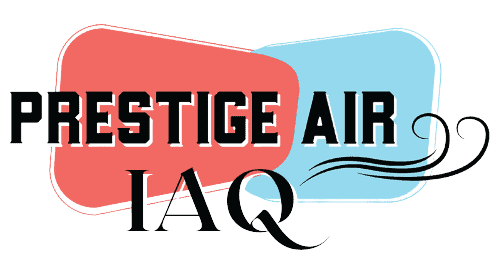Indoor Allergy Symptoms: 4 Parts to Understanding, Managing, and Finding Relief
Are you experiencing unexplained sneezing, coughing, or itchy eyes within the comfort of your own home? You might be suffering from indoor allergies. Indoor allergy symptoms can range from mild to severe, affecting millions of people worldwide. This comprehensive guide aims to shed light on the topic, helping you understand the causes, symptoms, and effective management strategies to find relief and improve your quality of life.
Table of Contents
What are the 4 parts to Indoor Allergy Symptoms?
Understanding Indoor Allergies
1.1 What are indoor allergies?
Indoor allergies, also known as perennial allergies, are allergic reactions triggered by substances present indoors, such as dust mites, pet dander, mold spores, and cockroach debris. Unlike seasonal allergies, indoor allergies can occur year-round, causing persistent symptoms.
1.2 Common indoor allergens
Explore the most common indoor allergens, including dust mites, pet dander, mold spores, cockroach debris, and indoor pollutants like tobacco smoke and volatile organic compounds (VOCs). Understanding these allergens is crucial for effective management.
1.3 The immune system’s role
Learn how the immune system responds to indoor allergens, leading to the release of histamines and other chemicals that cause allergy symptoms. Understanding this process will help you grasp the mechanisms behind indoor allergies.
Recognizing Indoor Allergy Symptoms
2.1 Nasal symptoms
Discover the various nasal symptoms associated with indoor allergies, such as sneezing, runny or stuffy nose, postnasal drip, and sinus pressure. We’ll delve into the reasons behind these Indoor Allergy Symptoms and how to differentiate them from other conditions like the common cold.
2.2 Respiratory symptoms
Explore respiratory symptoms like coughing, wheezing, and shortness of breath that can result from indoor allergies. We’ll discuss how these Indoor Allergy Symptoms can affect your daily life and the importance of seeking medical attention if they become severe.
2.3 Eye and skin symptoms
Learn about the allergic conjunctivitis, commonly known as itchy, red, and watery eyes, as well as skin-related symptoms like itching, rashes, and eczema. Understanding these Indoor Allergy Symptoms will help you identify their triggers and explore appropriate treatment options.
Managing Indoor Allergies
3.1 Allergen avoidance
Discover practical tips to minimize your exposure to indoor allergens, such as regular dusting and vacuuming, using allergen-proof bedding, maintaining proper humidity levels, and implementing a strict no-smoking policy at home.
3.2 Air filtration and purification
Learn about the role of air filters and purifiers in reducing indoor allergens. We’ll discuss different types of filters and purifiers available in the market, helping you make an informed decision when selecting the right one for your needs.
3.3 Medications for symptom relief
Explore over-the-counter and prescription medications commonly used to alleviate indoor allergy symptoms. We’ll discuss antihistamines, decongestants, nasal sprays, and other treatment options, as well as their potential side effects.
3.4 Immunotherapy and allergy shots
Discover the potential of immunotherapy, including allergy shots or sublingual immunotherapy, to provide long-term relief from indoor allergies. We’ll discuss how these treatments work and who might benefit from them.
3.5 Lifestyle adjustments
Learn about lifestyle changes that can complement your Indoor Allergy management efforts, including maintaining a healthy diet, regular exercise, stress reduction techniques, and creating an allergy-friendly environment.
When to Seek Professional Help
4.1 Knowing when to seek professional help
While self-care measures and over-the-counter medications may provide relief for many individuals with indoor allergies, there are instances where seeking professional help is necessary. Consider the following situations:
4.2 Severe or persistent symptoms
If your Indoor Allergy Symptoms are severe, persistent, or significantly impacting your daily life, it’s essential to consult a healthcare professional. They can conduct a comprehensive evaluation, identify the underlying causes, and recommend appropriate treatment options.
4.3 Lack of response to over-the-counter medications
If you’ve tried over-the-counter medications for a reasonable period and haven’t experienced significant improvement, it’s time to seek professional guidance. A healthcare provider can prescribe stronger medications or explore alternative treatments to manage your indoor allergy symptoms effectively.
4.4 Allergy testing and diagnosis
If you’re unsure about the specific allergens triggering your symptoms or suspect you may have multiple allergies, allergy testing can provide valuable insights. A healthcare professional can perform skin prick tests, blood tests, or other diagnostic procedures to identify the allergens responsible for your indoor allergies.
4.5 Asthma-like symptoms
Some individuals with indoor allergies may develop asthma-like symptoms, such as wheezing, chest tightness, or shortness of breath. If you experience these respiratory symptoms, it’s crucial to consult a healthcare professional promptly for an accurate diagnosis and appropriate management.
Indoor Allergy Symptoms Conclusion
Indoor allergies can be disruptive and negatively impact your quality of life, but with the right knowledge and management strategies, relief is possible. By understanding the causes, recognizing the symptoms, and implementing effective management techniques, you can minimize the impact of indoor allergens and find relief. Remember, if your symptoms persist or worsen, it’s essential to consult a healthcare professional for a comprehensive evaluation and personalized treatment plan. With proper care, you can take control of your indoor allergies and enjoy a healthier, more comfortable living environment.







